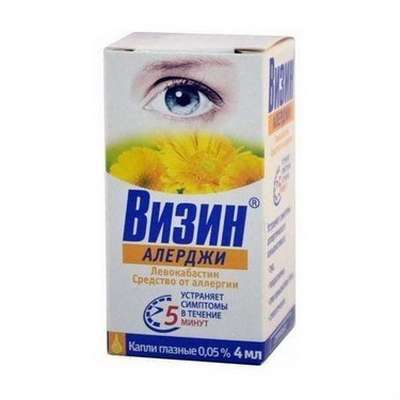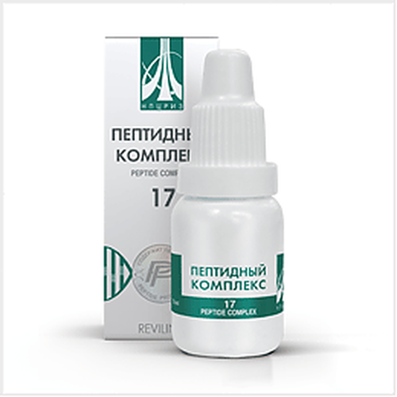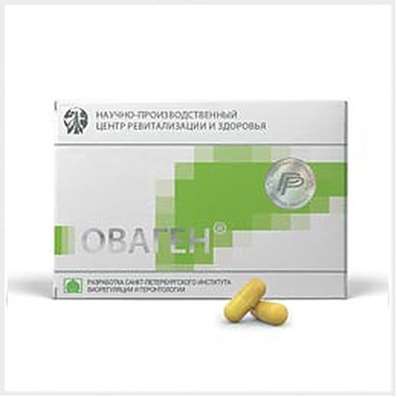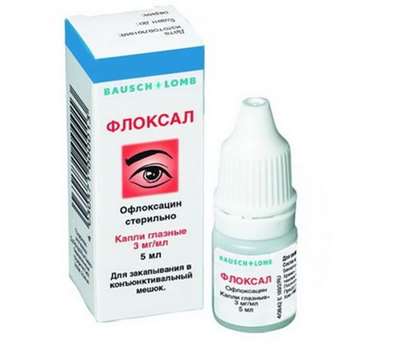Instruction for use: Estecor
I want this, give me price
Active substance Esatenolol
ATX Code C07AB11 Esatenolol
Pharmacotherapeutic group:
Beta-blockers
The nosological classification (ICD-10)
E05.9 Thyrotoxicosis, unspecified
tireotoksicski reaction, Enlargement of the thyroid gland with symptoms of hyperthyroidism, The phenomenon of iodine Basedow, Thyroid hyperplasia, hyperthyroid state, Hyperthyroidism, Thyroid dysfunction, Diffuse thyrotoxic goiter, The latent thyrotoxicosis, Increased thyroid function, thyrotoxicosis
F10.3 abstinence
Alcohol withdrawal syndrome. abstinence symptom, Abstinence syndrome in alcoholism, abstinence, alcohol Abstinence, alcohol withdrawal, Alcohol abstinence, Alcohol withdrawal syndrome, postabstinentnom disorder, postabstinentnom state, alcohol withdrawal syndrome, withdrawal syndrome, The syndrome of alcohol abstinence, alcohol withdrawal syndrome, Status of abstinence
G43 Migraine
The pain of migraine, Migraine, hemiplegic migraine, Migraine headache, A migraine attack, Continuous headache, hemicrania
G25.0 Essential tremor
shake, Generalized muscle tremors, Essential tremor family, essential tremor, Tremor idiopathic, Tremor idiopathic benign, Tremor hereditary, Essential tremor is benign
I10 Essential (primary) hypertension
Hypertension, Arterial hypertension, Arterial hypertension crisis course, Essential Hypertension
Primary hypertension, Arterial hypertension, complications of diabetes, hypertension, The sudden increase in blood pressure, Hypertensive disorders of blood circulation, hypertensive condition, hypertensive crises, hypertension, arterial Hypertension, malignant Hypertension, Hypertonic disease, Hypertensive crisis, Hypertension, accelerated hypertension, malignant hypertension, The aggravation of hypertensive disease, Transient hypertension, Isolated systolic hypertension
I15 Secondary hypertension
Arterial hypertension, complications of diabetes, hypertension, The sudden rise in blood pressure, Hypertensive disorders of blood circulation, hypertensive condition, hypertensive crises, hypertension, arterial hypertension, malignant hypertension, Hypertensive crisis, Hypertension, accelerated hypertension, malignant hypertension, hypertensive crisis, The aggravation of hypertensive disease, Transient hypertension, hypertension, Arterial hypertension, Arterial hypertension crisis course, renovascular hypertension, symptomatic hypertension, renal hypertension, Renovascular hypertension, Symptomatic hypertension
I20 Angina [cardiac angina]
heberden disease, Angina pectoris, The attack of angina pectoris, recurrent angina, Spontaneous angina, Stable angina pectoris, angina, Angina (attack), Angina rest, Angina progressing, Angina mixed, Angina spontaneous, stable angina, Chronic stable angina, Angina Syndrome X
I21 Acute myocardial infarction
Myocardial infarction in the acute phase, Acute Myocardial Infarction, Myocardial infarction with pathologic Q wave and without, Myocardial infarction complicated by cardiogenic shock, Infarction left ventricular, Transmural myocardial infarction, Myocardial infarction netransmuralny (subendocardial), Netransmuralny myocardial infarction, Subendocardial myocardial infarction, The acute phase of myocardial infarction, Acute myocardial infarction, Sub-acute phase of myocardial infarction, Subacute phase of myocardial infarction, Thrombosis of the coronary arteries (the arteries), Threatened myocardial infarction, Myocardial infarction without Q wave
I25 Chronic ischemic heart disease
Coronary heart disease on the background of hypercholesterolemia, Coronary heart disease is a chronic, Coronary heart disease, Stable coronary artery disease, Percutaneous transluminal angioplasty, Myocardial ischemia, arteriosclerosis, Recurrent myocardial ischemia
I25.2 Transferred last myocardial infarction
Cardiac syndrome, Myocardial infarction, post-MI, Rehabilitation after myocardial infarction, Reocclusion of the operated vessel, Angina postinfarctnaya, Status after myocardial infarction, Status after myocardial infarction, myocardial infarction
I34.1 prolapse [prolapse] mitral valve
Rupture of papillary muscle, Barlow syndrome, Mitral valve prolapse syndrome, Mitral valve prolapse
I42 Cardiomyopathy
cardiopathy, diffuse cardiomyopathy, Diffuse neobliteriruyuschaya cardiomyopathy, myocardial Gipokaliygistidii, myocardiodystrophy, Acute cardiomyopathy, Chronic cardiomyopathy
I47 Paroxysmal tachycardia
Atrioventricular reciprocating tachycardia, paroxysmal, Atrioventricular nodal paroxysmal tachycardia, Paroxysmal fibrilloflutter
I47.1 Supraventricular tachycardia
Supraventricular paroxysmal tachycardia, supraventricular tachyarrhythmia, Supraventricular arrhythmias, Supraventricular paroxysmal tachycardia, supraventricular tachyarrhythmias, Neurogenic sinus tachycardia, orthodromic tachycardia, Paroxysm of supraventricular tachycardia, Paroxysm of supraventricular tachycardia with WPW-syndrome, Paroxysm of atrial tachycardia, Paroxysmal supraventricular tachyarrhythmia, Paroxysmal supraventricular tachycardia, Politopnye atrial tachycardia, Atrial fibrillation, Atrial tachycardia is true, Atrial tachycardia, Atrial tachycardia with AV block, reperfusion arrhythmias, Reflex Bertsolda-Jarisch, Recurrent sustained supraventricular paroxysmal tachycardia, Symptomatic ventricular tachycardia, Sinus tachycardia, Supraventricular paroxysmal tachycardia, Tachycardia of AV connections, Tachycardia orthodromic, sinus tachycardia, The nodal tachycardia, Chaotic atrial tachycardia politopnye, Wolff-Parkinson-White
I47.2 Ventricular tachycardia
Torsades de pointes (torsade de pointes), Symptomatic ventricular tachycardia, Torsades de pointes in myocardial infarction, Ventricular fibrillation, Ventricular tachicardia, Ventricular tachyarrhythmias, Life-threatening ventricular arrhythmias, Sustained ventricular tachycardia, Sustained monomorphic ventricular tachycardia, Paroxysmal ventricular tachycardia torsades, Paroxysmal ventricular tachycardia
I48 Atrial fibrillation and flutter
Permanent atrial tachyarrhythmias, Relief frequent ventricular rate during atrial flutter or blink, atrial fibrillation, Paroxysm of atrial fibrillation and flutter, Paroxysm of atrial fibrillation, Paroxysmal atrial fibrillation, Atrial premature beats, Tahisistolicheskoy atrial fibrillation, auricular flutter, Life-threatening ventricular fibrillation, Atrial fibrillation, Chronic atrial fibrillation, supraventricular arrhythmia, Paroxysmal atrial fibrillation and flutter, Paroxysmal fibrilloflutter, Atrial premature beats
I49.1 Atrial premature depolarization
supraventricular arrhythmia, supraventricular beats
I49.3 Premature ventricular depolarization
Asynergia left ventricle, ventricular Arrhythmia, Pronounced PVCs, Ventricular fibrillation, ventricular beat, Ventricular arrhythmias, ventricular beat, Paroxysmal ventricular arrythmia, Recurrent ventricular arrhythmias, ventricular premature beats, Asynergia ventricular
I49.8 Other specified cardiac arrhythmias
atrial fibrillation, Arrhythmia Paroxysmal atrial, Atrial arrhythmia tachysystolic, sinus arrhythmia, Asynergia ventricular, Asynergia left ventricle, Corrigan's pulse, atrial fibrillation, atrial tachyarrhythmia, The migration of supraventricular pacemaker, Orthostatic changes in pulse, Disclaimer sinoatrial node, The paradoxical pulse, Paroxysm of atrial fibrillation, Paroxysmal atrial fibrillation, Paroxysmal dysrhythmia, Paroxysmal atrial-ventricular rhythm, Romano-Ward syndrome, trigemini, bigeminy
I51.8 Other ill-defined heart diseases
I95 Hypotension
hypotension, Age hypotension, arterial Hypertension, Hypotonic disease, hypotonic reaction, postural hypotension, Symptomatic hypotension, Essential hypotension
Structure and Composition
Tablets 1 tab.
atenolol 12.5 mg\ 25 mg\ 50 mg
Excipients: magnesium stearate; sodium starch glycolate; sodium lauryl sulfate; MCC; pregelatinized starch; colloidal silica; starch; dye "sunset yellow"
in a strip of 14 pcs .; In the paper cartons 2 strip.
The drug forms
12.5 mg Tablets: Round biconvex tablets white labeled "A / T" on one side and "12.5" - other.
25 mg Tablets: Round biconvex tablets white labeled "A / T" on one side and "25" - to another.
50 mg Tablets: Round biconvex tablets light orange, labeled "A / T" on one side and "50" - to another.
pharmachologic effect
antianginal, hypotensive, anti-arrhythmic.
pharmacodynamics
Cardioselective beta1-blocker, has no membrane stabilizing and intrinsic sympathomimetic activity. Blocking in low doses of beta1-adrenergic receptors of the heart, reduces the formation of catecholamines stimulated cAMP from ATP, reduces the current intracellular Ca2 +, has a negative chrono-, Drome, BATM and inotropic effect (slows heart rate, depresses conduction and excitability, reduces myocardial contractility). OPSS early use of beta-blockers (for the first 24 hours after oral administration) is increased (as a result of reciprocal increase in the activity of alpha-adrenoceptor stimulation and removal of beta2-adrenoceptor), returns to the initial and long-term administration is reduced during 1-3 days.
The hypotensive effect associated with a decrease in cardiac output, a decrease in activity of the renin-angiotensin system (is more important for patients with initial hypersecretion of renin), the sensitivity of the baroreceptors of the aortic arch (not going to increase their activity in response to a reduction in blood pressure), and the influence of the central nervous system. The antihypertensive effect is a decrease in the garden, and Dad. The average therapeutic doses has no effect on the tone of the peripheral arteries. Antihypertensive effect lasts for 24 hours, when taken regularly is stabilized by the end of 2 weeks of treatment.
Antianginal effect is determined by a decrease in myocardial oxygen demand by reducing heart rate (diastole lengthening and improving myocardial perfusion) and contractility, as well as a decrease in the sensitivity of the myocardium to the effects of the sympathetic innervation. It slows heart rate at rest and during exercise. Due to increasing end Dad in the left ventricle and increase the tension of the muscle fibers of the ventricles can increase oxygen demand, especially in patients with chronic heart failure. The antiarrhythmic effect is due to the elimination of arrhythmogenic factors (tachycardia, increased activity of the sympathetic nervous system, increased cAMP levels, hypertension), decrease in the rate of spontaneous excitation of the sinus and ectopic pacemakers and slowing of AV. Inhibition of pulses observed mainly in the anterograde and to a lesser extent - in the retrograde direction through the AV node and on additional routes.
Increases the survival of patients with myocardial infarction (reduces the incidence of ventricular arrhythmias and angina attacks).
Almost does not weaken the bronchodilatory effect of isoproterenol. In contrast, nonselective beta-blockers when given in therapeutic doses, the average has a less pronounced effect on the organs containing beta2-adrenergic receptors (pancreas, skeletal muscle, smooth muscle of the peripheral arteries, bronchi and uterus) and carbohydrate metabolism; atherogenic action expression is not different from that of propranolol. When used in large doses (over 100 mg / day) has a blocking effect on both beta-adrenoceptor subtype. Negative chronotropic effect appears after 1 h after administration, reaching a maximum after 2-4 hours and lasts up to 24 hours.
Pharmacokinetics
Absorption from the gastrointestinal tract quickly and incomplete (50-60%) bioavailability - 40-50% of solubility in lipids is very low. Tmax -. 2-4 h Poor permeates through GEB, crosses the placental barrier and into breast milk. Plasma protein binding - 6-16%. Practically not metabolized in the liver. T1 / 2 - 4-6 hours (increases in elderly patients). Excreted by the kidneys by glomerular filtration (85-100% unchanged). Impaired renal function accompanied by longer T1 / 2 and cumulation (necessary to decrease the dose) with Cl creatinine less than 35 mL / min / 1.73 m 2 T1 / 2 - 16-27 hours, with Cl creatinine less than 15 mL / min / 1.73 m2 -. more than 27 hours and in anuria is extended up to 144 h is displayed during hemodialysis.
Indications
Coronary artery disease, angina pectoris (stress, rest and unstable), hypertension, hypertensive crisis, mitral valve prolapse, hyperkinetic cardiac syndrome functional genesis, cardiopsychoneurosis of hypertensive type, essential and senile tremor, agitation and tremor with withdrawal syndrome.
Treatment and prevention of myocardial infarction (acute phase in stable hemodynamic parameters, secondary prevention); arrhythmias (including general anesthesia, congenital syndrome of elongated interval QT, myocardial infarction without signs of congestive heart failure, hyperthyroidism), sinus tachycardia, paroxysmal atrial tachycardia, supraventricular and ventricular premature beats, supraventricular and ventricular tachycardia, atrial tachyarrhythmia, atrial flutter atria.
In the combined therapy: hypertrophic cardiomyopathy, pheochromocytoma (only with alpha-blockers), hyperthyroidism; migraine (prevention).
Contraindications
Hypersensitivity, cardiogenic shock, AV block grade 2-3, bradycardia with a heart rate less than 40 bpm. / Min, sinus node weakness syndrome, sinoatrial block, congestive heart failure, or decompensated chronic heart failure, cardiomegaly without signs of congestive heart failure, Prinzmetal angina, arterial hypotension (in the case of myocardial infarction, garden less than 100 mm Hg. Art.), breastfeeding, concomitant use of MAO inhibitors.
With care - diabetes, metabolic acidosis, hypoglycemia; a history of allergic reactions, chronic obstructive pulmonary disease (including bronchial asthma, emphysema); Chronic heart failure (compensated), obliterating peripheral vascular disease ( "intermittent" claudication, Raynaud's syndrome); pheochromocytoma, liver failure, chronic renal failure, myasthenia gravis, thyrotoxicosis, depression (including history), psoriasis, pregnancy, older age, children's age (efficacy and safety are not defined).
Pregnancy and breast-feeding
Application of pregnancy and breastfeeding is possible if the benefit to the mother outweighs the risk of side effects in the fetus and child.
Side effects
From the nervous system: fatigue, weakness, dizziness, headache, drowsiness or insomnia, "nightmarish" dream, depression, anxiety, confusion, or momentary loss of memory, hallucinations, decreased ability to concentrate, decreased reaction rate, paresthesia in the extremities ( in patients with "intermittent" claudication and Raynaud's syndrome), myasthenia gravis, seizures.
From the senses: visual disturbances, reduced secretion of tear fluid, dryness and soreness of eyes, conjunctivitis.
Since the cardiovascular system: bradycardia, heart rate, conduction disturbances infarction, AV block (up to cardiac arrest), arrhythmia, weakening of the myocardial contractility and development (worsening) of chronic heart failure, orthostatic hypotension, symptoms vasoconstriction (cooling of the lower extremities, Raynaud's syndrome ), vasculitis, chest pain.
From the digestive system: dry mouth, nausea, vomiting, abdominal pain, constipation or diarrhea, taste changes.
The respiratory system: nasal congestion, difficulty breathing when administered at high doses (loss of selectivity) and / or in predisposed patients - laryngo and bronchospasm.
From endocrine system: hyperglycemia (in patients with insulin-dependent diabetes), hypoglycemia (in patients receiving insulin), hypothyroid state.
Allergic reactions: itching, rash, urticaria.
For the skin: increased sweating, flushing of the skin, exacerbation of psoriasis symptoms, psoriasis-like skin rash, reversible alopecia.
Laboratory findings: thrombocytopenia (unusual bleeding and hemorrhage), agranulocytosis, leukopenia, increased activity of "liver" enzymes, hyperbilirubinemia.
Effect on the fetus: intrauterine growth retardation, hypoglycemia, bradycardia.
Other: back pain, arthralgia, weakening of libido, reduced potency, "cancellation" syndrome (increased angina attacks, increased blood pressure).
The frequency of adverse events increased with increasing dose.
Interaction
The allergens used for immunotherapy, or allergen extracts for skin tests increase the risk of severe systemic allergic reactions or anaphylaxis in patients treated with atenolol. Iodinated radiopaque drugs for i / v administration increases the risk of anaphylactic reactions. Phenytoin at / in the introduction, drugs for inhalation general anesthesia (derivatives of hydrocarbons) increase the intensity of cardiodepressive action and the likelihood of blood pressure lowering. When concomitant administration of insulin and oral hypoglycemic drugs mask the symptoms of developing hypoglycemia. Reduces clearance of lidocaine and xanthine (except dyphylline) and increases their concentration in plasma, especially in patients with initially increased clearance of theophylline under the influence of smoking. Antihypertensive effect of weakening the NSAID (delay Na + and kidneys PG synthesis blockade), corticosteroids, and estrogens (delay Na +). Cardiac glycosides, methyldopa, reserpine and guanfacine, BCCI (verapamil, diltiazem), amiodarone and other antiarrhythmic drugs increase the risk of developing or worsening heart failure, bradycardia, AV block and cardiac arrest. Diuretics, clonidine, sympatholytic, hydralazine, BCCI and other antihypertensive drugs may lead to an excessive reduction in blood pressure. Extends the action of non-depolarizing muscle relaxants and anticoagulant effect of coumarin. Tri- and tetracyclic antidepressants, antipsychotic drugs (neuroleptics), ethanol, sedatives and hypnotics drugs increase CNS depression. Not recommended simultaneous application with MAO inhibitors due to the significant increase in the hypotensive action, a break in treatment between receiving MAO inhibitors and atenolol should not be less than 14 days. Non-hydrogenated ergot alkaloids increase the risk of peripheral circulatory disorders.
Dosing and Administration
Inside, before meals, with liquid squeezed small amount of liquid. Initial dose - 25-50 mg / day; if necessary increase dose at 1 week and then 50 mg if necessary - up to 200 mg, the average dose - 100 mg / day. In coronary artery disease, cardiac arrhythmias tahisistolicheskoy - 50 mg 1 time per day.
In acute myocardial infarction with stable hemodynamic parameters: inward after 10 minutes after the last on / in the introduction, at a dose of 50 mg, 50 mg and then again after 12 hours; hereinafter - 50 mg 2 times a day or 100 mg once daily for 6-9 days (under the control of blood pressure, ECG, blood glucose). When hyperkinetic cardiac syndrome appoint 25 mg / day. When Cl creatinine 15-35 ml / min - 100 mg a day or 50 mg / day; if Cl creatinine less than 15 mL / min - 50 mg a day or 100 mg 1 time in 4 days, or on the background of hemodialysis - 50 mg after each dialysis. In elderly patients, an initial single dose - 25 mg (may be increased under the control of blood pressure, heart rate). Assigning more than one time per day is impractical because atenolol is valid for 24 hours. Increasing daily dose not exceeding 100 mg is recommended, because the therapeutic effect is not enhanced, and the likelihood of side effects increases. The maximum daily dose - 200 mg. Dose reduction in the case of a proposed cancellation produce gradually, 1/4 dose every 3-4 days.
Overdose
Symptoms: bradycardia, dizziness, excessive reduction of blood pressure, fainting, arrhythmia, ventricular premature beats, AV block II-III degree, chronic heart failure, cyanosis of nails of fingers or palms, cramps, difficulty breathing, bronchospasm.
Treatment: gastric lavage and the appointment of absorbent medicines; in violation of AV conduction and / or bradycardia - in / in a 1-2 mg of atropine, epinephrine or staging a temporary pacemaker; with ventricular arrhythmia - lidocaine (Ia class of drugs does not apply); with a decrease in blood pressure - the patient must be in the Trendelenburg position. If there are no signs of pulmonary edema - in / plasma substituting solutions, with inefficiency - the introduction of epinephrine, dopamine, dobutamine; in chronic heart failure - cardiac glycosides, diuretics, glucagon; in convulsions - in / diazepam; with bronchospasm - inhalation or parenterally - beta adrenostimulyatorov. Perhaps dialysis.
special instructions
Monitoring of patients taking atenolol should include monitoring of heart rate and blood pressure (at the beginning of treatment - daily, then 1 every 3-4 months), the content of blood glucose in patients with diabetes (1 every 4-5 months). In elderly patients, it is recommended to monitor renal function (1 every 4-5 months). It is necessary to train the patient's heart rate calculation method and instruct on the need of medical advice in heart rate less than 50 bpm. / Min. Approximately 20% of patients with angina Beta-blockers are ineffective. The main reason - severe coronary atherosclerosis with a low threshold of ischemia (heart rate less than 100 beats / min.) And increased end-diastolic volume of the left ventricle, which violates the subendocardial blood flow. The "smoking" the effectiveness of beta-blockers lower. Patients who use contact lenses should bear in mind that during treatment may decrease the production of tear fluid. When thyrotoxicosis Atenolol may mask certain clinical signs of hyperthyroidism (eg tachycardia). Abrupt withdrawal in patients with thyrotoxicosis is contraindicated because the symptoms can increase. In diabetes may mask tachycardia caused by hypoglycemia. In contrast, nonselective beta-blockers practically no increase insulin-induced hypoglycemia and delay recovery of blood glucose levels to the normal concentration. At the same time taking clonidine its reception can be terminated only after a few days after discontinuation of atenolol. Perhaps the increased severity of the allergic reaction and the lack of effect of conventional doses of epinephrine with aggravated allergic history. A few days prior to general anesthesia with ether is necessary to stop taking the drug. If the patient has taken the drug before surgery, he should pick up the drugs for general anesthesia with minimal negative inotropic effect. Reciprocal activation can be eliminated n.vagus in / atropine (1-2 mg). Drugs that reduce stocks of catecholamines (eg reserpine), may enhance the effect of beta-blockers, so patients taking these combinations of drugs should be under constant medical supervision in order to identify pronounced reduction in blood pressure and bradycardia. The drug can be administered to patients with diseases bronhospasticheskimi in case of intolerance and / or ineffectiveness of other antihypertensive drugs, but should strictly follow the dosage. Overdosing is dangerous development of bronchospasm. In the case of elderly patients increasing bradycardia (less than 50 u. / Min), hypotension (Sad below 100 mm Hg. Art.), The AV blockade bronchospasm, ventricular arrhythmias, severe liver and renal function is necessary to reduce the dose or stop treatment. It is recommended to discontinue therapy in the development of depression caused by the intake of beta-blockers. Do not abruptly discontinue the treatment because of the risk of severe arrhythmias and myocardial infarction. Abolition are gradually reducing the dose for 2 weeks or more (reduce dose by 25% in 3-4 days). It is necessary to cancel prior to the study in blood and urine catecholamines and Normetanephrine vanillylmandelic acid; titers of antinuclear antibodies. During the period of treatment must be careful when driving and occupation of other potentially hazardous activities that require high concentration and psychomotor speed reactions.
Storage conditions
In a cool, dry, dark place.
Keep out of the reach of children.
shelf life
2 years.
Do not use beyond the expiration date printed on the package.

 Cart
Cart





